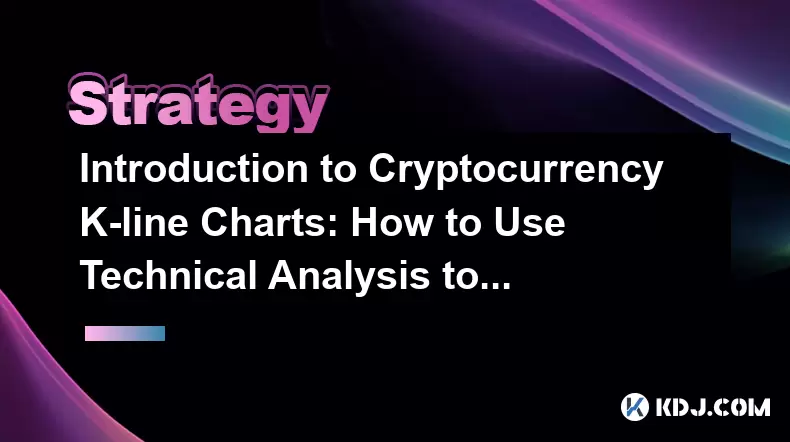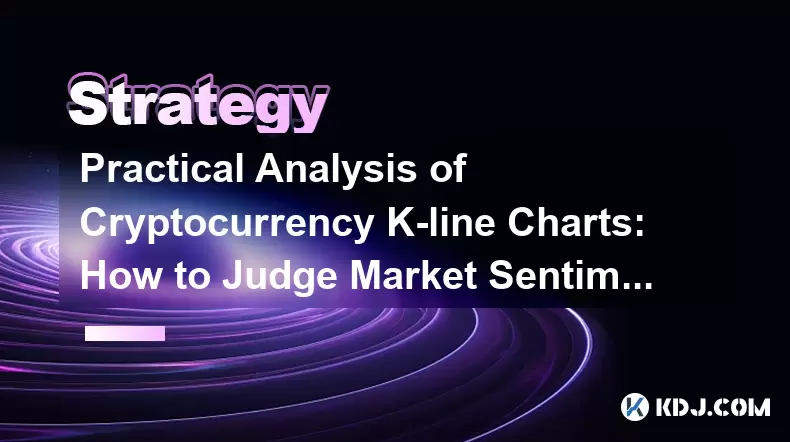-
 Bitcoin
Bitcoin $106,077.7663
-2.62% -
 Ethereum
Ethereum $2,644.4634
-6.15% -
 Tether USDt
Tether USDt $1.0002
0.01% -
 XRP
XRP $2.1872
-4.65% -
 BNB
BNB $653.9698
-2.13% -
 Solana
Solana $153.1055
-6.13% -
 USDC
USDC $0.9995
-0.02% -
 Dogecoin
Dogecoin $0.1816
-7.39% -
 TRON
TRON $0.2711
-2.62% -
 Cardano
Cardano $0.6627
-6.02% -
 Hyperliquid
Hyperliquid $41.2391
-2.26% -
 Sui
Sui $3.2151
-6.48% -
 Chainlink
Chainlink $13.9480
-8.21% -
 Avalanche
Avalanche $20.3371
-6.68% -
 Bitcoin Cash
Bitcoin Cash $426.8582
0.05% -
 Stellar
Stellar $0.2690
-3.73% -
 UNUS SED LEO
UNUS SED LEO $8.8698
-1.89% -
 Toncoin
Toncoin $3.0810
-5.36% -
 Shiba Inu
Shiba Inu $0.0...01223
-7.14% -
 Hedera
Hedera $0.1640
-6.34% -
 Litecoin
Litecoin $86.5702
-6.14% -
 Polkadot
Polkadot $3.9430
-6.93% -
 Ethena USDe
Ethena USDe $1.0004
-0.03% -
 Monero
Monero $316.4579
-4.76% -
 Bitget Token
Bitget Token $4.6091
-4.34% -
 Dai
Dai $1.0001
0.02% -
 Pepe
Pepe $0.0...01157
-8.95% -
 Uniswap
Uniswap $7.6778
-4.82% -
 Pi
Pi $0.6144
-3.05% -
 Aave
Aave $290.2271
-5.59%
How to use the value investment concept in the cryptocurrency circle to find undervalued projects?
Value investing in crypto utilizes fundamental analysis to identify projects with intrinsic value undervalued by market price, considering factors like project utility, team expertise, and tokenomics.
Nov 08, 2024 at 11:00 pm

How to Leverage Value Investing Concepts in Cryptocurrency for Undervalued Project Identification
Introduction
The cryptocurrency market, often perceived as highly volatile and speculative, has matured over the years, attracting value investors seeking long-term growth prospects. Value investing, a time-tested approach in traditional financial markets, can be effectively adapted to the cryptocurrency realm to uncover undervalued gems.
Step 1: Understanding Value Investing in Crypto
Value investing in cryptocurrency involves identifying projects with intrinsic value that is significantly below their market price. This approach emphasizes fundamental analysis, focusing on factors such as:
- Project Utility: The underlying purpose and real-world application of the cryptocurrency.
- Team Expertise: The experience and track record of the development team.
- Tokenomics: The distribution of tokens, token use cases, and potential demand drivers.
- Financial Health: The project's treasury, cash flow, and assets.
- Market Sentiment: The current perception and sentiment towards the project.
Step 2: Defining Value in Cryptocurrency
Establishing objective criteria to define value in the cryptocurrency market is crucial. Unlike traditional assets with well-defined metrics, cryptocurrency valuation can be challenging due to various factors, such as:
- Network Effects: The value of a cryptocurrency often increases as more users adopt it.
- Speculation: Market sentiment can drive prices significantly above or below intrinsic value.
- Technology Disruption: Blockchain technology is constantly evolving, leading to potential obsolescence of some projects.
Despite these challenges, certain quantitative and qualitative indicators can provide valuable insights into a project's value:
Quantitative Indicators:
- Market capitalization
- Trading volume
- Price-to-earnings (P/E) ratio
- Price-to-network metric (e.g., price-to-transaction volume)
Qualitative Indicators:
- Team competence and experience
- Community engagement and support
- Adoption rate and usage statistics
- Partnerships and collaborations
Step 3: Identifying Undervalued Projects
To identify undervalued projects, investors should:
- Screen for undervalued candidates: Use quantitative indicators to filter out projects with high price-to-network ratios or low turnover rates.
- Evaluate technical potential: Assess the project's underlying technology, whitepaper, and roadmap to gauge its long-term viability and innovation.
- Analyze team and community: Research the team's experience, track record, and the project's community engagement and support.
- Compare to peers: Conduct a peer analysis to compare the project's valuation metrics with similar projects in the same sector.
- Consider market sentiment: While sentiment can be volatile, contrarian investors may find opportunities in projects with negative sentiment but strong fundamentals.
Step 4: Valuing Cryptocurrencies
Various valuation methods can be applied to cryptocurrencies, including:
- Discounted Cash Flow (DCF): Projects with predictable cash flows can be valued using this method.
- Net Asset Value (NAV): This method assesses the value of a project's underlying assets.
- Earnings Multiplier: Similar to P/E ratios in traditional markets, this method uses a multiple of earnings to determine a fair market value.
- Multiples of Revenue or Transactions: In the absence of traditional earnings, these metrics can provide a proxy for project valuation.
Step 5: Risk Assessment and Portfolio Construction
Investing in cryptocurrencies carries inherent risks. Value investors should:
- Diversify portfolio: Spread investments across multiple undervalued projects to reduce concentration risk.
- Manage volatility: Expect price fluctuations and be prepared to hold for the long term.
- Conduct thorough research: Base investment decisions on thorough due diligence and analysis.
- Monitor investments: Regularly review project performance and make adjustments as needed.
Conclusion
Applying value investing principles to the cryptocurrency market can enhance the identification of undervalued projects with long-term growth potential. By understanding value, conducting thorough research, and managing risks effectively, investors can capitalize on opportunities in this emerging asset class.
Disclaimer:info@kdj.com
The information provided is not trading advice. kdj.com does not assume any responsibility for any investments made based on the information provided in this article. Cryptocurrencies are highly volatile and it is highly recommended that you invest with caution after thorough research!
If you believe that the content used on this website infringes your copyright, please contact us immediately (info@kdj.com) and we will delete it promptly.
- Ditching the Meme: Why Savvy Investors Are Putting Their Money into Ruvi AI Instead of Shiba Inu
- 2025-06-13 07:00:13
- Spark Protocol Prepares to Airdrop Its SPK Token, TVL Surges 114%
- 2025-06-13 07:00:13
- Increasing by 4x in two months, Hype recovered fully from the early-year collapse and printed a new all-time high yesterday.
- 2025-06-13 06:57:02
- Coinbase to Launch Cryptocurrency Perpetual Futures Trading for U.S. Users
- 2025-06-13 06:50:13
- The Best Cryptos to Join Now: Qubetics, Stellar, and Tezos Are Leading the Charge
- 2025-06-13 06:50:13
- Trust Wallet Token (TWT) Price Drops 5.7% as RWA Integration Plans Ignite Excitement
- 2025-06-13 06:45:13
Related knowledge

Cryptocurrency K-line chart technical analysis manual: Learn these methods to increase your chances of making a profit
Jun 11,2025 at 11:21pm
Understanding the Basics of K-line ChartsK-line charts, also known as candlestick charts, are one of the most widely used tools in cryptocurrency trading. Each K-line represents a specific time period and provides information about the open, high, low, and close prices during that interval. The body of the candle shows the relationship between the openi...

The Importance of K-line Chart Analysis in Cryptocurrency Trading: From Theory to Practical Cases
Jun 11,2025 at 04:56pm
Understanding the Basics of K-line ChartsK-line charts, also known as candlestick charts, are a visual representation of price movements over specific time intervals. Each K-line encapsulates four critical data points: the opening price, closing price, highest price, and lowest price within a given timeframe. These charts originated in Japan during the ...

Cryptocurrency K-line Chart Interpretation Guide: How Novices Can Quickly Master the Basics of Technical Analysis
Jun 10,2025 at 08:56pm
Understanding the Basics of K-line ChartsK-line charts, also known as candlestick charts, are one of the most widely used tools in cryptocurrency trading for analyzing price movements. Each K-line represents a specific time period and shows the opening, closing, high, and low prices during that interval. For novices, grasping how to read these elements ...

Introduction to Cryptocurrency K-line Charts: How to Use Technical Analysis to Optimize Trading Decisions
Jun 12,2025 at 03:56pm
Understanding the Basics of K-line ChartsK-line charts, also known as candlestick charts, are one of the most essential tools used in cryptocurrency trading. Originating from Japan, these charts visually represent price movements over specific time intervals. Each candlestick displays four key pieces of information: the opening price, closing price, hig...

Practical Analysis of Cryptocurrency K-line Charts: How to Judge Market Sentiment through Charts
Jun 10,2025 at 09:42pm
Understanding the Basics of Cryptocurrency K-line ChartsCryptocurrency K-line charts, also known as candlestick charts, are essential tools for analyzing price movements in the crypto market. Each candlestick represents a specific time frame, such as 1 minute, 5 minutes, or even daily intervals. The structure of a K-line includes four key data points: o...

Detailed Explanation of Technical Analysis of Cryptocurrency K-line Charts: Master These Tools to Improve Trading Efficiency
Jun 12,2025 at 02:43am
Understanding Cryptocurrency K-line ChartsCryptocurrency K-line charts, also known as candlestick charts, are essential tools for traders aiming to interpret market behavior and make informed decisions. Each K-line represents a specific time period—such as 1 minute, 5 minutes, or 1 day—and displays the open, high, low, and close prices during that inter...

Cryptocurrency K-line chart technical analysis manual: Learn these methods to increase your chances of making a profit
Jun 11,2025 at 11:21pm
Understanding the Basics of K-line ChartsK-line charts, also known as candlestick charts, are one of the most widely used tools in cryptocurrency trading. Each K-line represents a specific time period and provides information about the open, high, low, and close prices during that interval. The body of the candle shows the relationship between the openi...

The Importance of K-line Chart Analysis in Cryptocurrency Trading: From Theory to Practical Cases
Jun 11,2025 at 04:56pm
Understanding the Basics of K-line ChartsK-line charts, also known as candlestick charts, are a visual representation of price movements over specific time intervals. Each K-line encapsulates four critical data points: the opening price, closing price, highest price, and lowest price within a given timeframe. These charts originated in Japan during the ...

Cryptocurrency K-line Chart Interpretation Guide: How Novices Can Quickly Master the Basics of Technical Analysis
Jun 10,2025 at 08:56pm
Understanding the Basics of K-line ChartsK-line charts, also known as candlestick charts, are one of the most widely used tools in cryptocurrency trading for analyzing price movements. Each K-line represents a specific time period and shows the opening, closing, high, and low prices during that interval. For novices, grasping how to read these elements ...

Introduction to Cryptocurrency K-line Charts: How to Use Technical Analysis to Optimize Trading Decisions
Jun 12,2025 at 03:56pm
Understanding the Basics of K-line ChartsK-line charts, also known as candlestick charts, are one of the most essential tools used in cryptocurrency trading. Originating from Japan, these charts visually represent price movements over specific time intervals. Each candlestick displays four key pieces of information: the opening price, closing price, hig...

Practical Analysis of Cryptocurrency K-line Charts: How to Judge Market Sentiment through Charts
Jun 10,2025 at 09:42pm
Understanding the Basics of Cryptocurrency K-line ChartsCryptocurrency K-line charts, also known as candlestick charts, are essential tools for analyzing price movements in the crypto market. Each candlestick represents a specific time frame, such as 1 minute, 5 minutes, or even daily intervals. The structure of a K-line includes four key data points: o...

Detailed Explanation of Technical Analysis of Cryptocurrency K-line Charts: Master These Tools to Improve Trading Efficiency
Jun 12,2025 at 02:43am
Understanding Cryptocurrency K-line ChartsCryptocurrency K-line charts, also known as candlestick charts, are essential tools for traders aiming to interpret market behavior and make informed decisions. Each K-line represents a specific time period—such as 1 minute, 5 minutes, or 1 day—and displays the open, high, low, and close prices during that inter...
See all articles

























































































